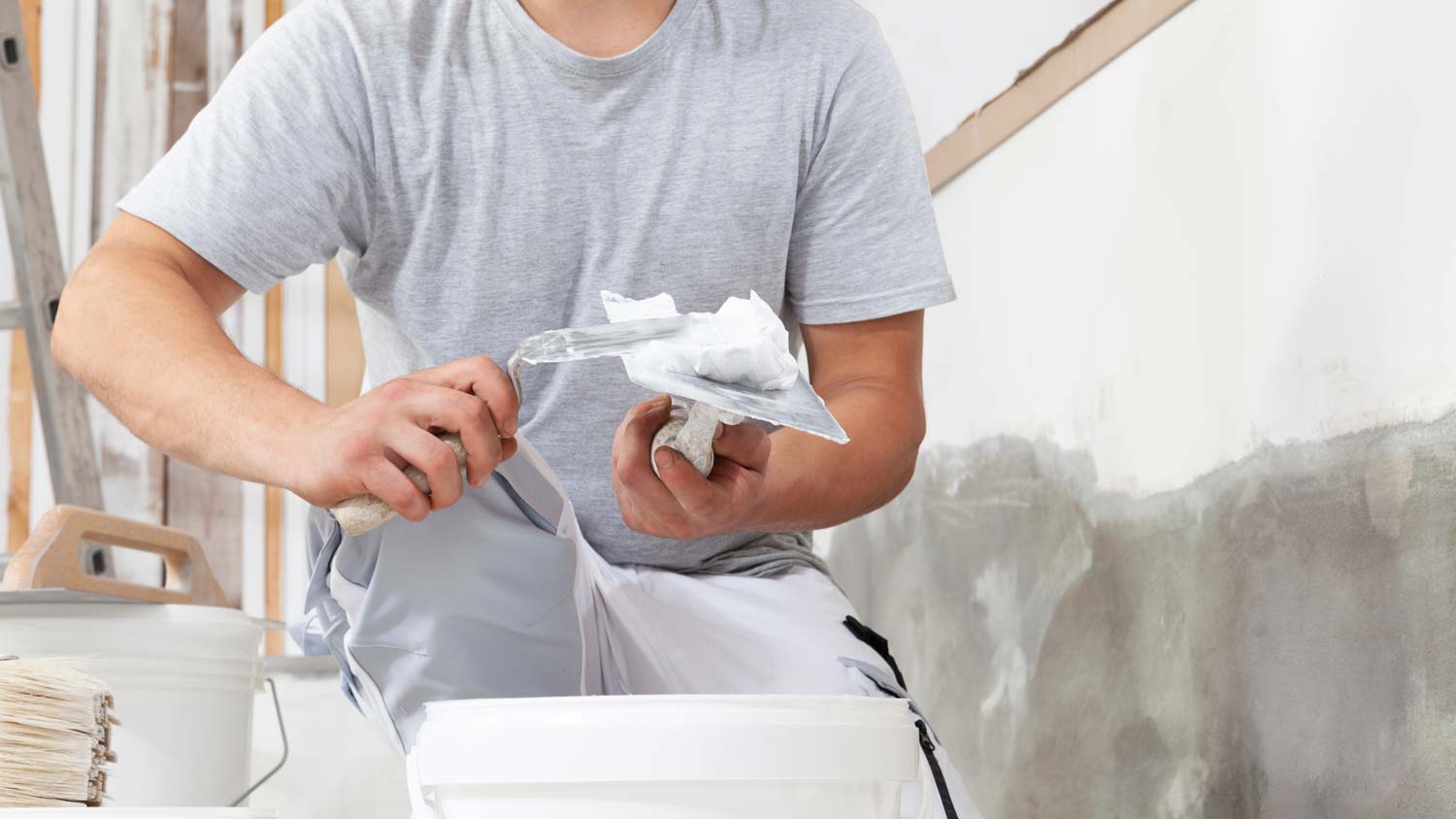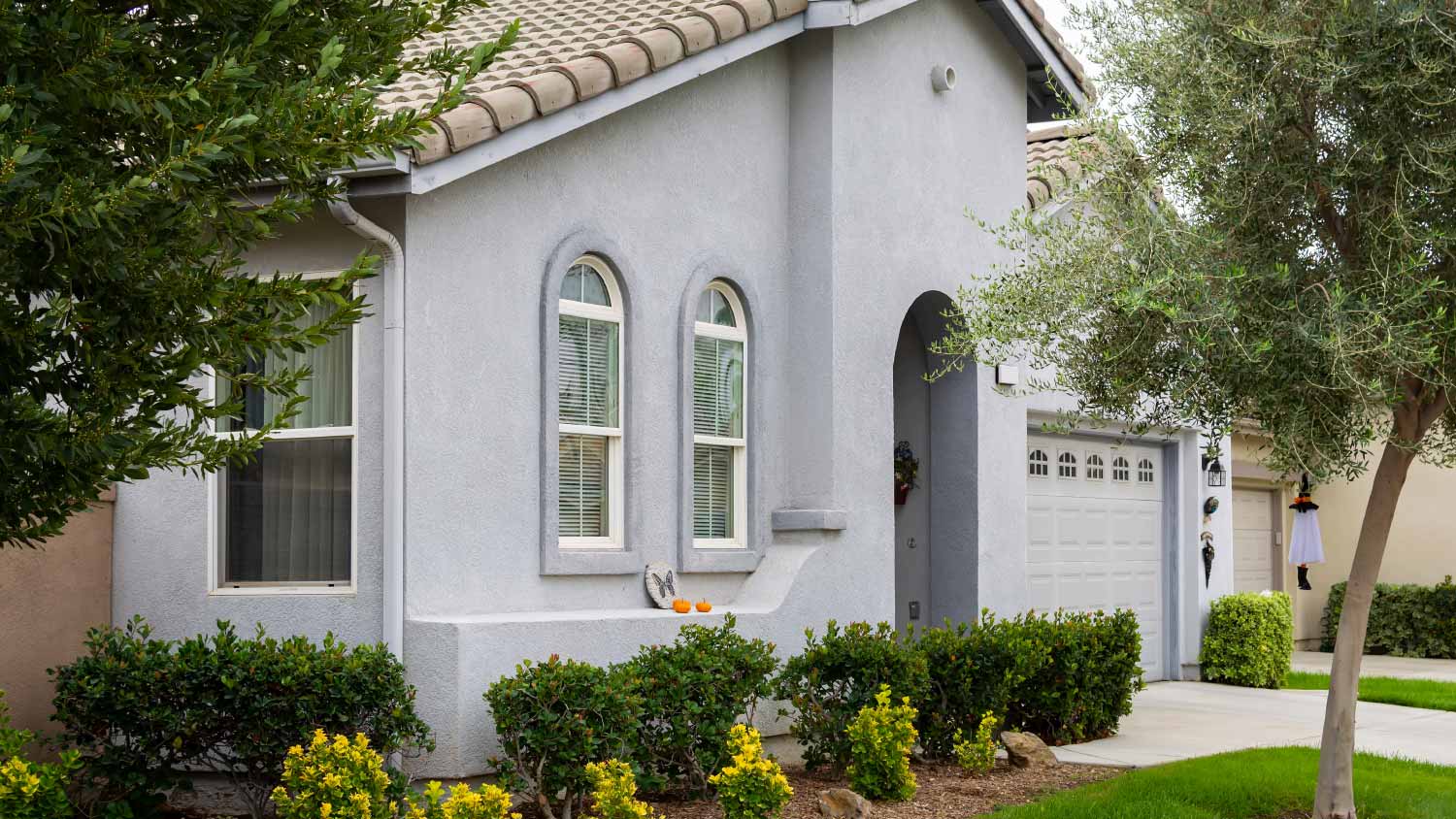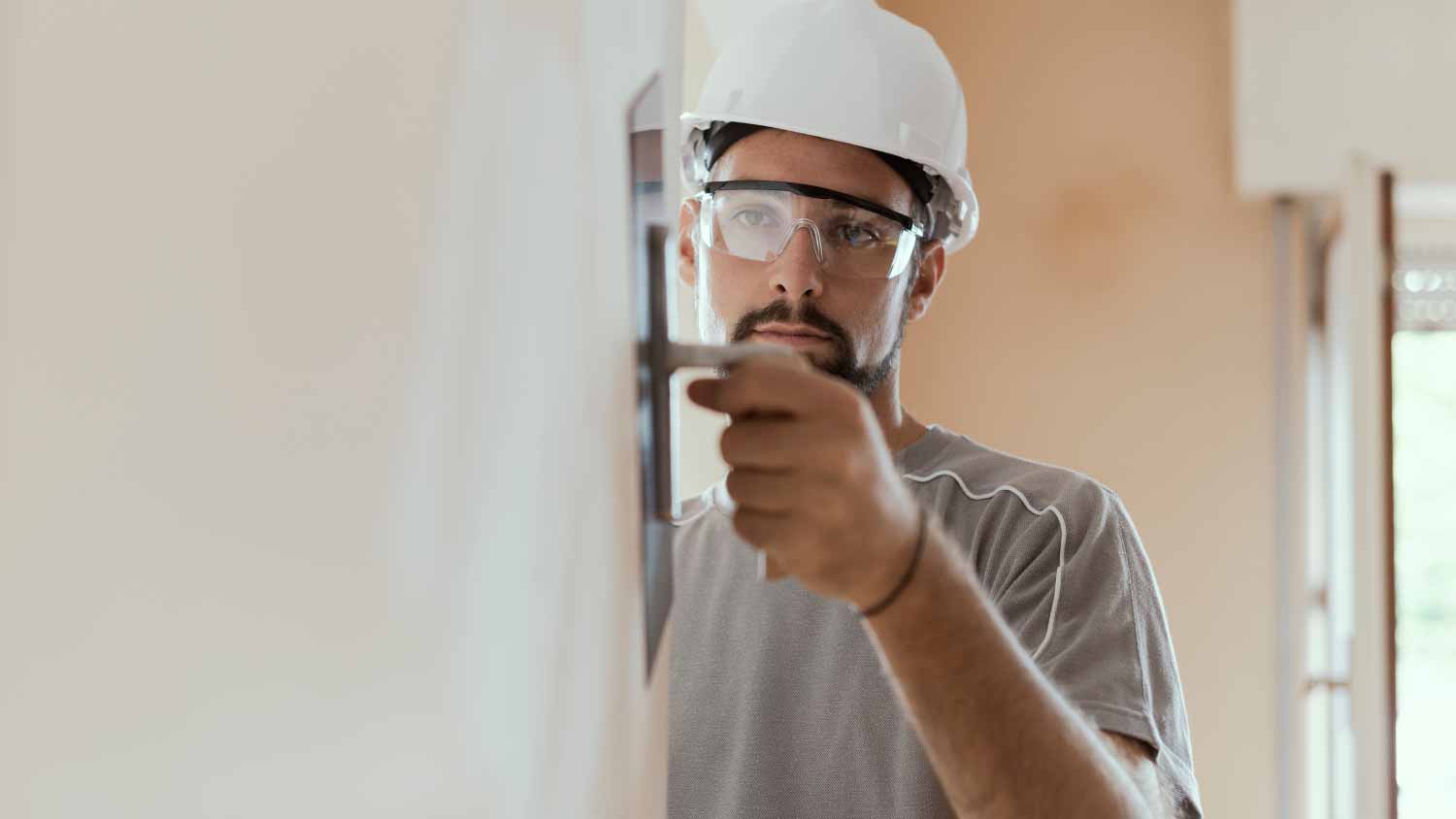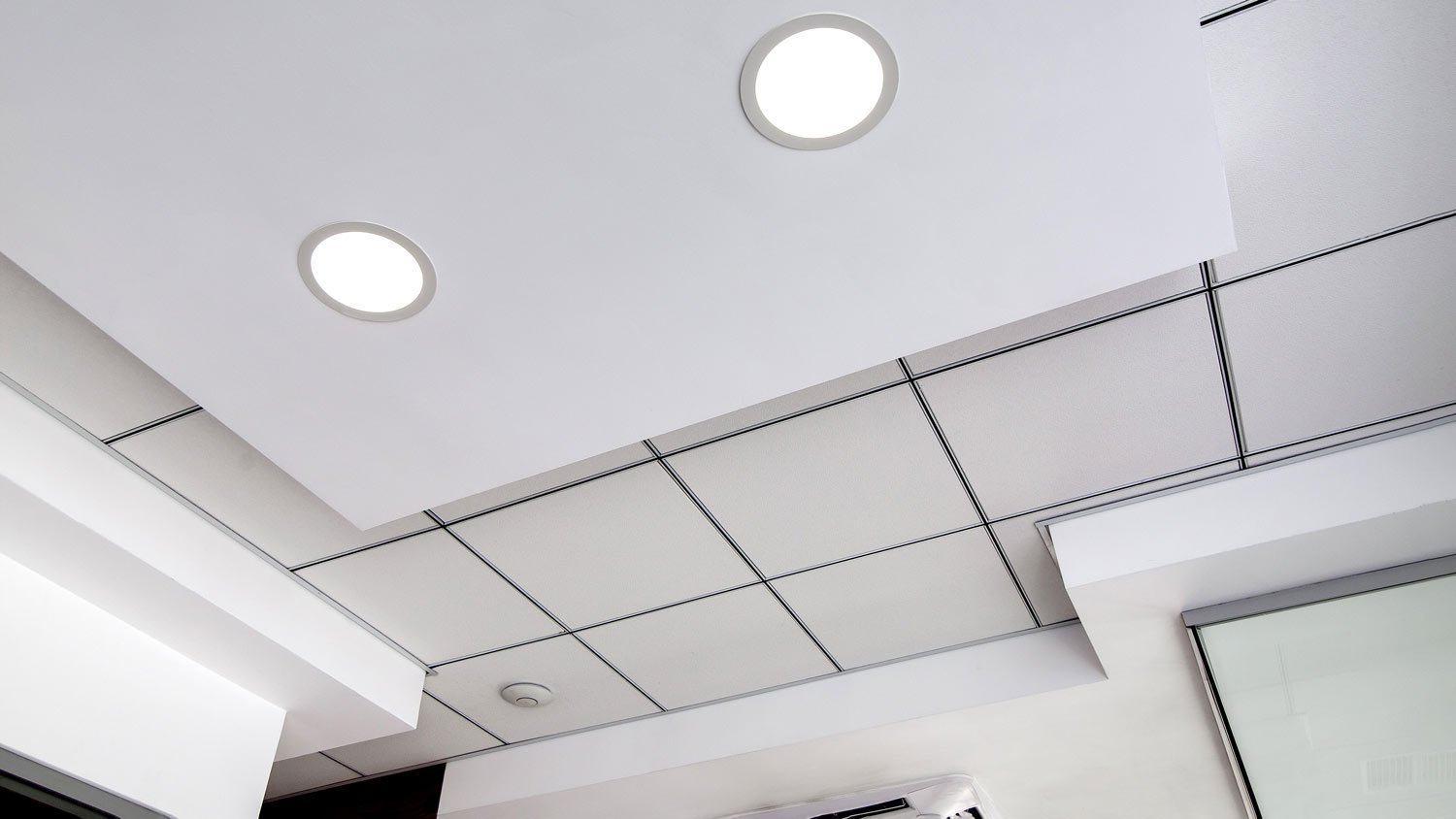
Drop ceilings are an affordable way to finish your room while maintaining access to utilities. Use this drop ceiling cost guide to estimate your project total.
Give your walls a smooth and aesthetically pleasing finish


A local plaster pro can help you determine what works best for your needs based on factors like your aesthetic preferences and whether you're working on interior or exterior walls.
Lime and waterproof plasters are more expensive options due to their specialized materials, while gypsum plaster is a more budget-friendly alternative.
The most popular choice for modern interior walls is gypsum plaster due to its smooth finish, while exterior walls work well with cement plaster.
Choose clay plaster for a more rustic look with a variety of colors that eliminate the need to paint.
Drywall may be the go-to choice for most home construction and renovation projects these days, but some cases call for plaster. Whether you're restoring an old home or building from the ground up, knowing the different types of plaster that are available, and when to use each one, will help you choose the right material for your project.

Think of lime plaster as the original plaster. People have used lime plaster for millennia to build walls and construct homes. The material itself is made from lime, water, and sand, and occasionally, horse hair, which acts as a binder. If you're remodeling a home built before the early 1900s, you'll likely see strands of hair in the dried plaster.
Lime plaster is flexible and breathable, meaning it can release moisture, making it suitable for use in kitchen and bathroom walls. Its flexibility means it can move as a home settles, making it less likely to crack.
While lime plaster was the plaster of choice for centuries, it's now less commonly used compared to other types of plaster. It has a higher price point than gypsum plaster and takes longer to apply, making labor costs more expensive.
However, lime plaster is typically the material of choice when restoring older homes, particularly homes that originally used the material.
| Pros | Cons |
|---|---|
| Works in humid areas | Higher cost |
| Flexible | Harder to install |
| Natural material | Higher maintenance |
Best use for lime plaster: Restoring older homes, or giving a classic look to a new house

Thanks to its lower cost, gypsum plaster is typically the plaster of choice in modern construction and renovation projects. This plaster is made from calcium sulfate dihydrate and is available in powdered form. Once mixed with water, the plasterer needs to work quickly to apply gypsum plaster. Otherwise, weak areas, or "cold joints" could form.
Gypsum plaster doesn't breathe as well as lime plaster so it's less suitable for use in older properties or in areas with high humidity levels, such as kitchens and bathrooms.
| Pros | Cons |
|---|---|
| Lower cost | Harder to install |
| Smooth finish | Less breathable |
| Faster installation | Vulnerable to moisture |
Best uses for gypsum plaster: Interior walls in modern homes (not bathrooms or kitchens)

Cement plaster consists of cement and sand, in place of either the gypsum or lime. It's quick-setting and thick, meaning you need to work fast when using it. You can use cement plaster on interior or exterior walls, but it typically has a rougher finish than gypsum or lime plaster, so it usually isn't ideal if you want a smooth wall.
Cement plaster is less flexible and breathable than either gypsum or lime plaster, too. The best use for it may be on the exterior walls of newer homes.
| Pros | Cons |
|---|---|
| Highly durable | Rough finish |
| Fast setting time | Lower flexibility |
| Fire-resistant | Vulnerable to cracking |
Best uses for cement plaster: Coating exterior walls

Clay plaster uses clay as the base, mixed with sand and water. You can also add pigments to the clay plaster mix, eliminating the need to paint the plaster walls when you're finished.
The plaster produces a rustic finish. Since there's no need to paint it, choosing clay plaster can release fewer volatile organic compounds (VOCs) into the home.
Clay absorbs water fairly readily, so the plaster isn't good for bathrooms and other high-humidity areas.
| Pros | Cons |
|---|---|
| Low VOCs | Vulnerable to humidity |
| Variety of colors | Higher cost |
| Natural material | Harder to DIY |
Best uses for clay plaster: Interior walls in modern homes

Stucco plaster is a cement-based type of plaster popular for outdoor spaces. The mixture, made with cement, sand, lime, and water, holds up well to inclement weather, and the textured finish adds curb appeal without sacrificing durability. This material isn’t completely fireproof, but it does have a higher fire resistance than many other types of plaster.
Another benefit of stucco is that it holds up well to sunlight, so you won’t need to worry that the color of your stucco will fade quickly after application. With just light maintenance, stucco can last many decades.
| Pros | Cons |
|---|---|
| Weatherproof | Lower insulation |
| Higher fire resistance | Vulnerable to chipping |
| Not prone to fading | Porous |
Best uses for stucco: Home exteriors in warm, dry climates

Whether you’re looking to finish a bathroom renovation with plaster walls or give the outside of your home a complete makeover, waterproof plaster is a solid choice. This material, which is also known as tadelakt, is a type of lime-based plaster that has been treated with a water-repellent soap finish to help the plaster better withstand moisture.
Waterproof plaster is not only ideal for humid areas and outdoors, but it’s also durable against cracking, shrinking, and inclement weather. However, keep in mind that if waterproof plaster gets a big ding or scratch, it could damage the waterproof coating and require extensive repairs, if not a full replacement.
| Pros | Cons |
|---|---|
| Stands up to humidity | More expensive |
| Highly durable | Difficult to repair |
| Easy to clean | Higher maintenance |
Best uses for waterproof plaster: High-humidity areas, like bathrooms and kitchens
Drywall and plaster work require extensive practice and talent. You can try a DIY repair if a patch is small enough or where you won’t mind looking at a less-than-professional job when it’s done. If an entire wall needs repair, trust the pros to do the work so you're happy with the results.
Depending on the type of plaster you choose, a plaster pro near you can finish it in several ways. Plaster finishes affect the texture, color, and overall appearance of the walls. For example, you may choose a plaster finish that creates a smooth, shiny wall or a rough, textured surface. Mixing different pigments into lime or clay plaster also increases your finishing options.
While there are many plaster finishing options available, two of the more popular finishes are Venetian and Tadelakt.
From average costs to expert advice, get all the answers you need to get your job done.

Drop ceilings are an affordable way to finish your room while maintaining access to utilities. Use this drop ceiling cost guide to estimate your project total.

The eye-catching character of a coffered ceiling can really set your room design apart. This guide breaks down coffered ceiling costs to help you budget.

Venetian plaster can add depth and texture to your aesthetic. Learn how much Venetian plaster costs based on factors like square footage and whether you hire a pro to help.

You can find plaster walls in a lot of older homes. What’s behind these walls—whether that’s lath or calcimine—can have an impact on how long they last. Finding out the age of your house can help you determine what you’re dealing with.

Learn how to figure drop ceiling grid and tile material for any room in your home using this calculator to minimize waste and maximize attractiveness.

Applying the right amount of mist coat extends the life of your paint. But how many times should you mist coat new plaster? Find out with this guide.